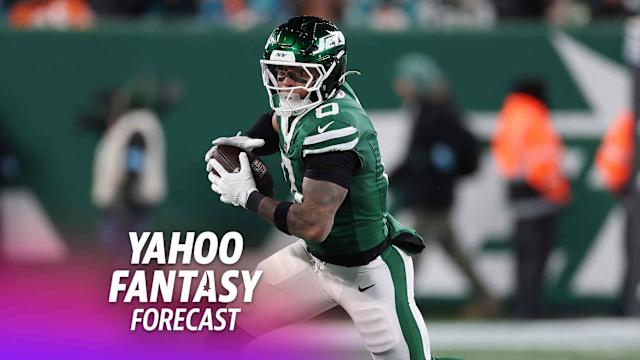
I love playing and writing about the Salary Cap format in fantasy football. It’s a format that allows you the widest set of roster builds, and the most control over how you shape your roster.
But it’s also the most challenging — and I mean that as a player and a writer. Every Salary Cap Draft result (sometimes called an Auction Draft) is unique to its own experience. It’s the Pulp Fiction of fantasy formats, a story told out of order, a story unlike anything that came before it.
[Join or create a Yahoo Fantasy Football league for the 2025 NFL season]
With that in mind, I’m here to offer a review of the Salary Cap Draft I did at the King’s Classic last week in Canton, Ohio. I guess it’s a quasi-review. The real goal of this article is to offer you Salary Cap tips and make you better prepared for your own Salary Cap leagues. Because every Salary Cap room behaves differently, with wide ranges, I don’t want to get too locked into what we did a week ago. Your room could easily behave much differently.
Fantasy Football Salary Cap Draft Strategy
Here are the specs from my league, the Blanda Division:
14 managers
$200 budget, in dollar increments
16 roster spots, 10 starters weekly
1 QB
2 RB
3 WR
1 TE
3 Flex (RB, WR or TE)
No Kickers or DST required
6 Bench Spots
You can view our Salary Cap results here. You can also view the Jim Brown Salary Cap Draft here; same specs, with 14 different industry managers, drafting at the same time we did.
Here is the roster I wound up with:
Quarterback
QB Jalen Hurts, $14
The Tush Push lives and I liked getting an elite QB without the elite cost. Lamar Jackson went for $26, Josh Allen went for $24, and Jayden Daniels went for $20. Rostering Hurts also meant I could limit my QB room to one guy and acquire an extra field player. This league will generally have playable QBs on the waiver wire all year.
Running Back
RB Omarion Hampton, $28
RB Tony Pollard, $14
RB J.K. Dobbins, $9
RB Tank Bigsby, $8
RB Najee Harris, $7
RB Tyler Allgeier, $4
I wanted two solid options in the backfield and then reasonable-cost guys elsewhere, with everyone hopefully having league-tilting upside. I generally won’t get two backs on the same team — it limits your upside, and I want to play for the big inning in August; backfield insurance to me is a late-October or early-November thing — but Harris was so cheap, I decided to take two bites at the LAC apple. We did our draft after the Rashawn Slater news, so I knew what I was signing up for. Pollard has struck me as a value all summer (since our draft, Tyjae Spears has gotten hurt) and I liked putting a chip on the nebulous Jacksonville backfield. Allgeier would need a Bijan Robinson injury to acquire relevance, but you never know.
Wide Receiver
WR Amon-Ra St. Brown, $39
WR DeVonta Smith, $21
WR Jaylen Waddle, $21
WR Rashid Shaheed, $7
WR Rashod Bateman, $5
WR Cedric Tillman, $4
WR Wan’Dale Robinson, $11*
Now we’re talking. This is my kind of build, a "No Stars, Just Talent" approach. The Sun God is obviously a well-respected player, but I think the industry is overrating what the Ben Johnson defection means. St. Brown was merely the WR9 in price for this draft. I love Drake London, but I can’t justify London going at $49 when St. Brown is gettable for $39. Your mileage may vary.
Waddle was a target of mine, tied to a fade of Tyreek Hill. While I was landing Waddle in this room, Matt Harmon was doing the same about 50 feet away in the Jim Brown League. Smith has a sturdy floor and offers some upside if Philadelphia’s pass rate jumps, which is likely after last year’s unusually high run rate. I don’t view stacking as mandatory, but I do like having Hurts tied to one of his star receivers. Shaheed, Bateman and Tillman can all be playable flexes in a deep, 14-team league like this.
Robinson was my final player purchased and I had 11 bucks. I needed them — Drew Davenport also had $11 as a max bid available and he had selected Robinson in the straight draft we did earlier that day. I am not going to say I was proud to get Robinson at this price — it reflects I could have rostered someone better earlier in the draft — but he was the best player on my board at that moment, by far. He’s fine as a WR7 on my depth chart, especially in a full-PPR format.
Tight End
TE Dalton Kincaid, $5
TE Dallas Goedert, $3
Every roster probably has a belly somewhere. This is mine. Maybe Kincaid can pop in Year 3. Goedert fits the theme of Philly probably throwing more this year. The tight end I was targeting, Tucker Kraft, chased up to the $10 mark (the TE5 in the results); more than I wanted to pay. I did regret watching Travis Kelce go for just $7, not that I can be sure a plus-one bid would have mattered. Bob Lung seemed to really want Kelce, so I think he was committed to the chase.
If your rosters look stronger than this one, I get it. Remember, in an 8-10 team league, you’ll love your roster. In a 12-teamer, you’ll probably like it. In a 14-teamer, you’re supposed to hate it. There’s less stuff for everyone to get. It also means we’re satisfied with a lower level of production, too.
Because this league requires 10 weekly starters, I wanted depth over the top-shelf megastar talent. This is a team of Bs and B-plus guys, I get it. I’m okay with that. I hit a 3-wood off the tee.
I did a good job with value, if I track the Blanda results against the Brown results. My roster (off a $200 budget) was worth $217 in the Jim Brown room, and that’s with an endgame overpay of Robinson by $7. Of course, value isn’t everything. And it’s a highly-relative concept.
Let’s give you some specific Salary Cap tips that you can use.
[Subscribe to Yahoo Fantasy Plus and unlock Instant Mock Drafts today]
Tips for Salary Cap Leagues
Tip 1: Get others to spend their money
Pretty simple here. When your opponents shell out cash, they lose leverage going forward. This is why most of your nominations should be on the best players you don’t want, can’t afford, or have a conflict with (if you roster Lamar Jackson early, might as well throw Josh Allen out there — you won’t roster both of them in a standard format).
Tip 2: Vary your nomination style
Sure, most of my throws will be on those players who I’m not targeting. But you don’t want to be too predictable. Some managers will only throw out players they want, and some managers will never throw out players they covet. This becomes exploitable to a sharp opponent. Try to get a sense of the style of your opponents, it will help you know how to handle those players when it gets late in the bidding cycle.
Tip 3: Closely monitor the market behavior
Although it’s not perfect, it’s likely that players with similar Straight Draft ADP will also have similar prices in Salary Cap. So if you’re targeting Brian Thomas Jr., you might note carefully what Malik Nabers commands on the market. The Jackson and Allen prices will be close in most leagues. Trey McBride and Brock Bowers will likely land on the same number. You get the point. Everyone has a different level of engagement and focus in a Salary Cap draft, but I’ll spend a lot of time trying to figure out the market behavior puzzle.
Tip 4: Bid because it helps you, not because it screws someone else
If you’re a veteran Salary Cap player, you might be really good at running up the bid on a player you really don’t want — all with the eye of exploiting an opponent who seems set on getting the current player, no matter what. If you can execute this properly, it’s extremely satisfying.
But if the other manager backs out and you get stuck with someone you don’t like — or someone who doesn’t fit your roster build and current price structure — it’s a tilting experience.
You have to be realistic with your skill in this area. I don’t want to discourage you from challenging an opponent if you think your read is correct. But if you’re not sure, or you’re new to the format, I recommend against dancing this close to the sun.
Tip 5: Don’t confuse the room with your bidding purpose
I know it’s fun to make bids in a Salary Cap room. You want to be in the mix, you want to dance the dance.
But it’s critical you don’t confuse the room.
Once a player starts to zero in on his finishing number, it’s usually a battle between two managers over that player. If you engage in late bidding, the rest of the room thinks you’re going to price enforce — that is, you’re going to make sure the other manager doesn’t get too cheap a price. Meanwhile, the non-bidders will often times be engaged with something else — what their roster looks like, what they need, what’s left in the pool, etc.
If you engage in walk-up bidding on a player just for the fun of it and then back out because you weren’t really serious, what often happens is an opponent lands a player under market because the room mistakenly thought you were serious on bidding and would defend the bid at the end. If I’m unlikely to be in on a player late, I probably won’t bother bidding early. It confuses the room, and I can use that time for better things, anyway.
And heck, if you’re not a part of the bidding but the price does seem to be stalling far too low, you can always bounce in late.
Tip 6: Try to get your players while your opponents still have alternatives
Oh man, this one is huge. If you wait until the last good player at a perceived tier, that’s when inflation is likely to kick in. You’re now in a supermarket just hours before a snowstorm, fighting over the last loaf of bread. Avoid this nightmare scenario. Be sensitive to the tier-drops and player groupings as you perceive them.
Tip 7: Whenever possible, save some money for the endgame
The endgame is the only time where your nomination choice comes without any uncertainty. In the early part of the auction, no one really knows if you want the player you toss out there. At the end of the day, it's clear you want that name, especially once you're out of overbid funds. Don't handcuff yourself at this critical juncture. Have some leverage, keep some flexibility.
If you are pliable for the endgame, you'll accomplish two important goals. First and foremost, you'll have control for the end of the auction and you'll get a healthy share of the players you actually want. Second, you'll be done with the proceedings quicker than most, and don't blow off that point. As much fun as fantasy drafts and auctions can be, no one ever wished them any longer. Getting back to real life is a welcome thing. I don't know about you, but my draft/auction hangover (read: headache) is a harsh reality around hour three or four.
A lot of fantasy players shrug off the $1 burden for the endgame. "It's just a draft at the end, anyway, no one has any leverage," they say.
True, most actions do eventually get to that point. But before the last of the overbid money is sucked up, consider the hand you're dealing with if you're out of extra cash while some of your opponents still have a slush fund:
- You can't overbid anyone else for a player. You really don't matter except when it's your turn to name a player.
- If you name a player who's valuable, your bid is instantly trampled.
- If you call out a stiff, you're probably stuck with him.
- Now sit around and do nothing for another 8-10 minutes (while players you want go to your opponents).
I recognize some great Salary Cap players will favor a Stars and Scrubs build where they are fine with $1 options at the end — most of those players get cut, anyway. In a league with lower starting requirements, I would absolutely go Stars and Scrubs. But the more starters a league requires, the less likely I am to run a Stars and Scrubs build.
Tip 8: Appreciate key numbers in the endgame
I understand Wan’Dale Robinson is no great shakes, so focus on the tip, not the player. When I wanted Robinson at the end of the King’s Classic, it was important to recognize Drew Davenport and I had the same max bid remaining. Therefore, I had to shout out that number before he did — if he got there first, I would not get the player I wanted.
Often for the endgame, it’s a race to $2 — a bunch of managers will have a little bit of overbid leverage remaining, but not too much. In the early nominations, you don’t have to be on the edge of your seat, ready to jump in quickly. Those walkups take a while. For the endgame, you need to be hyper-alert because the player bidding periods are much tighter. Often it’s all about shouting out (or typing in) the key number first.
Tip 9: Sometimes it’s good to let the other team win a player
It’s a nuanced idea, but you want to recognize if your opponent might be in a bad spot if he wins the current player on the table. Will that win deplete them of all of their overbid leverage moving forward? Will that win give them an awkward, unbalanced roster? It takes some time to recognize this dynamic, but with experience, you’ll start to see it in action.
Bonus Tip: When you need a break
When a big-ticket item is introduced that you don’t want or need, there’s your bathroom break. Sometimes I’ll make a nomination with this purpose in mind.
I’m sure there are dozens of things I left out. These conversations are always open-minded in my mind. Catch me on Twitter/X or Blue Sky and we can keep the conversation going.

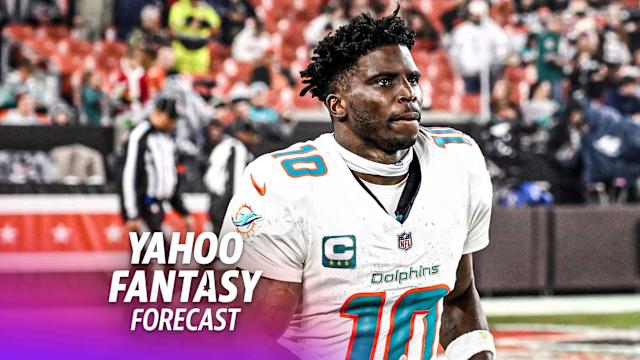
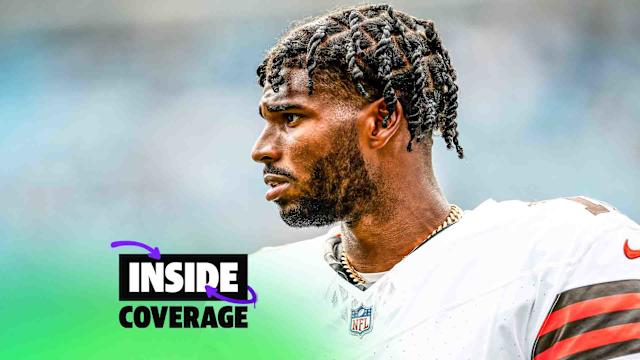
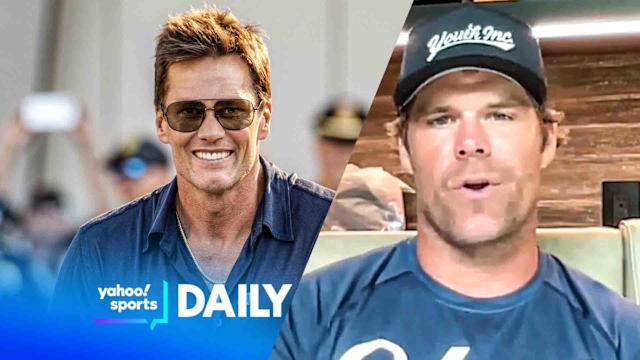
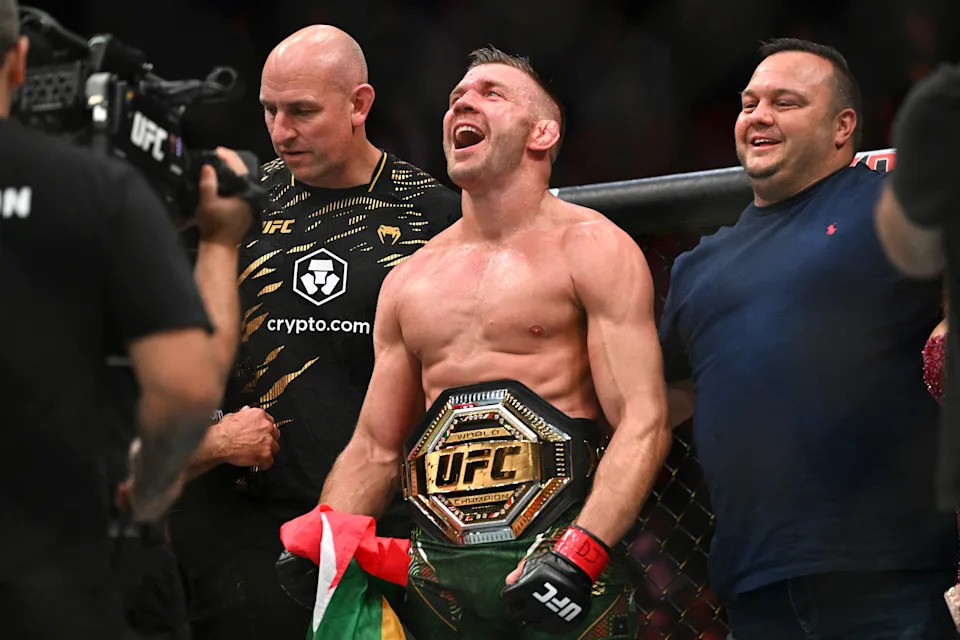

Comments